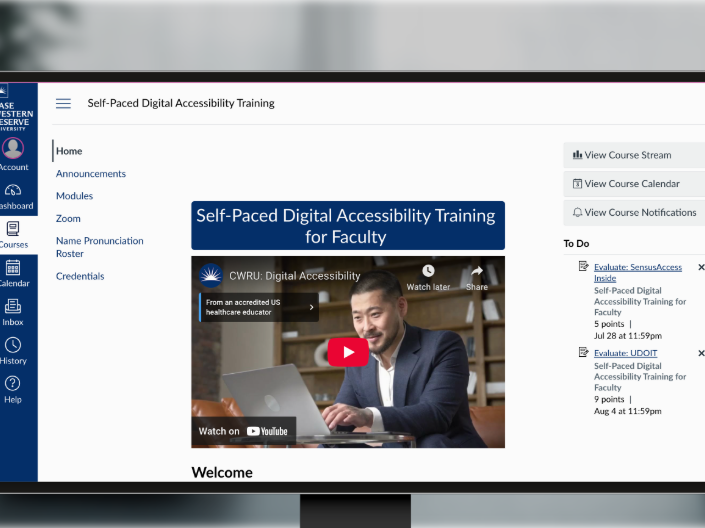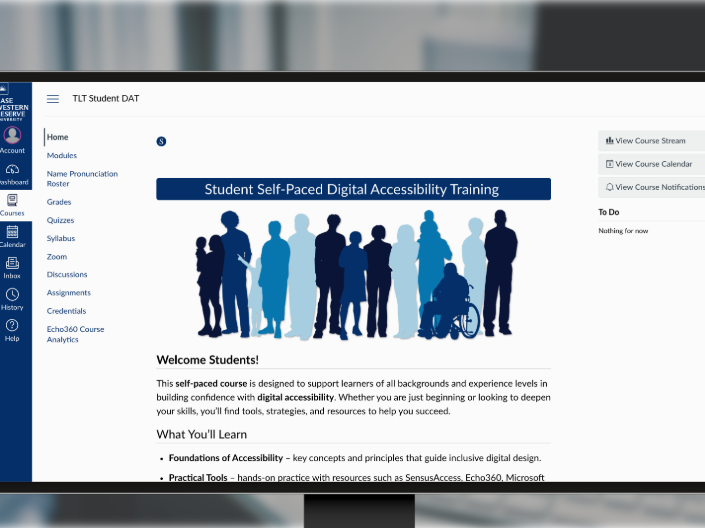Discover digital accessibility support, training, and engagement opportunities for faculty, staff, and students. Access a range of resources to help you create accessible academic content for everyone.
CWRU Digital Accessibility Policy
CWRU's digital accessibility policy, along with more information about the benefits of digital accessibility.
Training
Our team provides self-paced training for faculty and students, covering digital accessibility fundamentals. Each course is customized to suit the specific audience below.

Learn how to create accessible course materials for all students

Discover how to create accessible documents and presentations for classes and organizations
Support
Have a digital accessibility question? Explore our resources or reach out through multiple channels to get the answers you need on your accessibility journey.
Book a personal appointment for help with your digital accessibility questions.
Resource guides covering digital accessibility from basics to advanced topics
Tuesdays from 12:30 - 1 PM, ask your digital accessibility questions to our team
Newsletter
Sign up for TLT Newsletters
Sign up to both the Teaching and Learning Technologies and the monthly Digital Accessibility newsletter to get the latest updates about our team, including our new trainings, resource guides, tools, and technology, and more.

